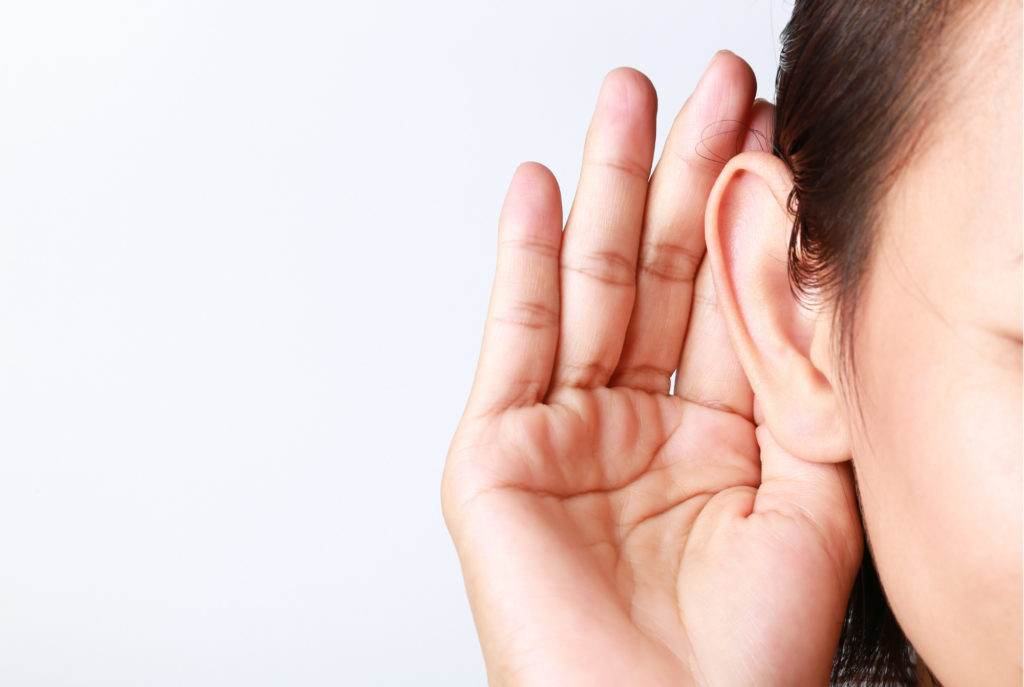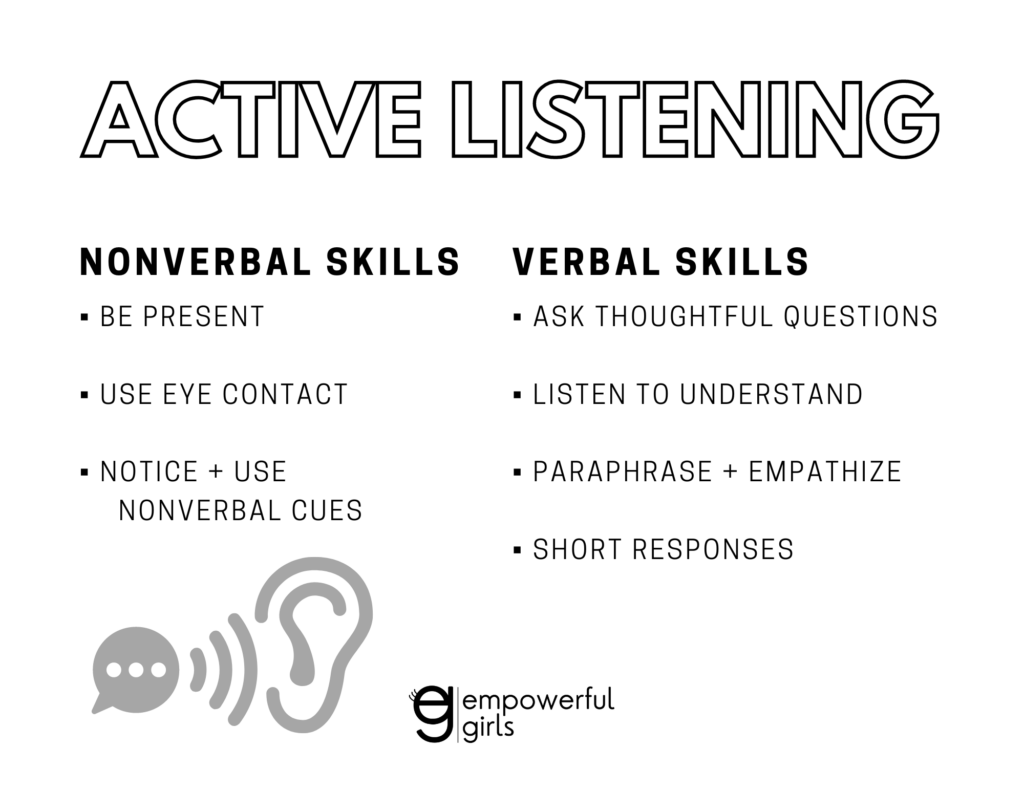
Listen and Learn
There’s a certain skill that is becoming more rare, not as many people are developing it, which in turn causes more confusion and conflict. Any ideas what skill I’m talking about? If you guessed listening, you’re right! Specifically, active listening–which is more than just hearing someone, it’s trying to understand them as you communicate.
Why aren’t we listening
I’m sure A reason (if not THE reason) active listening is in decline has to do with smart devices–phones, tablets, watches, computers, etc.–and their attention-grabbing apps, games, features, and notifications. Have you ever tried to have a meaningful conversation with someone who was staring at a screen? How’d that go? I imagine not well, likely because one person was distracted by and more interested in the screen than they were in the other person trying to talk to them. And that creates frustration, disconnection, and misunderstandings.
And with digital conversations, since tech has trained us to keep up the fast pace, which has given us shorter-attention spans, some people will post, comment, or reply like a knee-jerk reaction, without even thinking, literally thoughtless words. Clearly they aren’t even attempting to listen to others. Have you ever tried to have a meaningful conversation with someone over text, DMs, or in comments? How’d that go? I’m not saying it can’t happen, but both people need to be engaged in active listening for it to be productive.
Active Listening
Active listening is an important life skill to develop now because you’ll use it throughout your life. It fosters empathy and compassion. It clears up assumptions, misunderstandings, and confusion. And it helps build trust and strengthen connections. Active listening grows relationships–with family, friends, coworkers, even strangers.
So how can you practice active listening skills in-person and on devices? Let’s explore.
Nonverbal Active Listening Skills
Here are nonverbal active listening skills, meaning not involving speech or words.
Be Present
Whether you’re having an in-person or digital conversation, put down/turn off whatever you’re holding/playing/doing so you don’t get distracted, and give that person your full attention. If you can, be in a place where you can hear each other clearly with minimal interruptions–it’s hard to really listen to someone at a loud party or sporting event. If you’re listening to music, lower the volume so you can focus on just your conversation. Be present.
Use Eye Contact
You don’t need to lock eyes with the other person 100 percent of the time; that might actually make things weird. Aim for like five seconds of direct eye contact before looking away for a bit. But try not to get distracted in the process, like looking at a watch, a clock, or someone else, and if you do, reset your focus back on the person you’re talking to. If looking someone in the eye isn’t something you’re too comfortable with, pick a different spot on their face near their eyes–brows, nose, forehead, cheekbones. It’ll still help you stay engaged in the conversation, and the other person will see they have your attention. Use eye contact.
Notice and Use Nonverbal Cues
Pay attention to the nonverbal cues the other person uses and the ones you do in response: facial expressions–smiling, scrunched nose, raised eyebrows; hand gestures–waving, pointing, fists; body language–turned away, arms crossed, hands on hips; posture–hunched over, leaning forward, slumped back; and tone and speed of voice–low and slow, high and excited, sharp and bold. Nonverbal cues will help you and the other person exchange communication–notice and use them.
Verbal Active Listening Skills
These next ones are verbal active listening skills, things you can say or type when applicable.
Ask Thoughtful Questions
Instead of Yes or No questions, try open-ended ones like “What happened after that?” “How do you feel about it?” “Can you tell me more about __(something they mentioned)__?” These kinds of questions not only let the person speaking know you’re engaged in what they’re saying, they also help the conversation grow. Ask thoughtful questions.
Listen to Understand
Too often people just listen to respond or react to prove their point or dominate the conversation. Sharon McMahon also talked about this in episode 36. Instead of preparing what you’re going to say next while the other person speaks, just listen to their words and identify their emotions. Try to get a bigger picture of what they’re communicating to you. They want to be heard, so focus on hearing what they’re sharing with you. Listen to understand.
Paraphrase and Empathize
When it’s your turn to share your thoughts, summarize what you heard and empathize, too. “It sounds like what happened at lunch was really frustrating. I’m here for you.” “I can tell you really want that role in the school play. What can I do to help you prepare for your audition?” “You studied so hard and rocked that AP test! Let’s celebrate this weekend!” Also remember to hold off on judging them. And if you want to share your own similar experience to relate to them, keep it brief and then shift the conversation back to them. Paraphrase and empathize.
Short Responses
These help the person speaking see you’re continually listening. You can simply nod. Keep it short with “Uh huh” “Hmm” “Yeah” “Oh” “Whoa” as they continue talking. At a pause in their thought or story, say “That’s unbelievable” “How cool” “I agree 100%.” To put it all together, you can share short responses while someone continues their train of thought, and when they finish their thought, ask a thoughtful question or paraphrase and empathize.
Practicing both verbal and nonverbal active listening skills will help you enrich your relationships and develop as a person. Imagine what we could do if people actively listened to each other.
Active Listening Poster Printable
To help you remember all of this, I created an “Active Listening” poster for you to print out, personalize, and post on your wall where you’ll see it, remember it, practice it, and believe it — that’s the important part.
Resources
If you have a topic suggestion, I’d love to hear from you! Send an email (tweens get the OK from your parents) to hello@EmpowerfulGirls.com .
If you have social media already, follow me on Insta or tiktok @empowerfulgirls. I’m not encouraging or endorsing social media, but I’m on there to offer an unfiltered, uplifting alternative to what’s in your feed. Remember to get on the email list for the newsletter!
Also, if you enjoy listening to 10 for Teens + Tweens, I would truly appreciate you telling your friends about this podcast or leaving a review so others can find it and feel uplifted, too! Your support means the world to me!
